The Lab Incubator: Parts, Working, Types, and Precautions
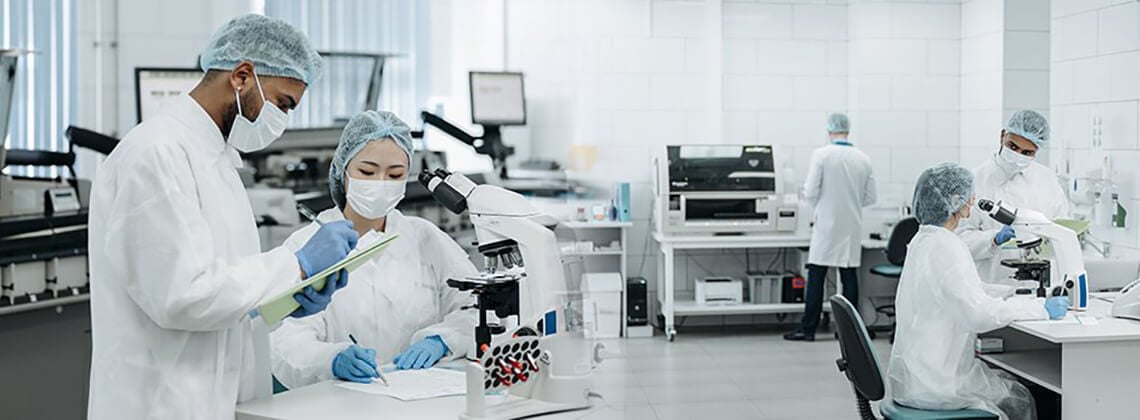
Imagine working in a state-of-the-art lab, conducting groundbreaking research in cell and tissue cultures or microbiology. The success of your experiments relies on maintaining optimal growth conditions for your samples. Enter the laboratory incubator: an unsung hero of the scientific world, providing the ideal environment for a wide range of applications. In this blog post, we will delve into the world of lab incubator, exploring their components, types, uses, and safety precautions to give you a comprehensive understanding of these essential laboratory tools.
From biochemical and hematological studies to pharmaceutical work and food analysis, lab incubator plays a vital role in various scientific fields. As we journey through the inner workings of these indispensable devices, you’ll gain valuable insights into how they function and the critical role they play in fostering scientific breakthroughs.
Key Takeaways
-
Laboratory incubators provide a controlled environment for various scientific applications.
-
Key features of lab incubators include temperature and humidity control, stackability, interior lighting, etc.
-
Laboratory incubators are essential in many fields such as cell culture research and microbiology studies. Safety protocols must be followed during operation with regular cleaning/maintenance to ensure optimal performance.
Understanding Laboratory Incubators
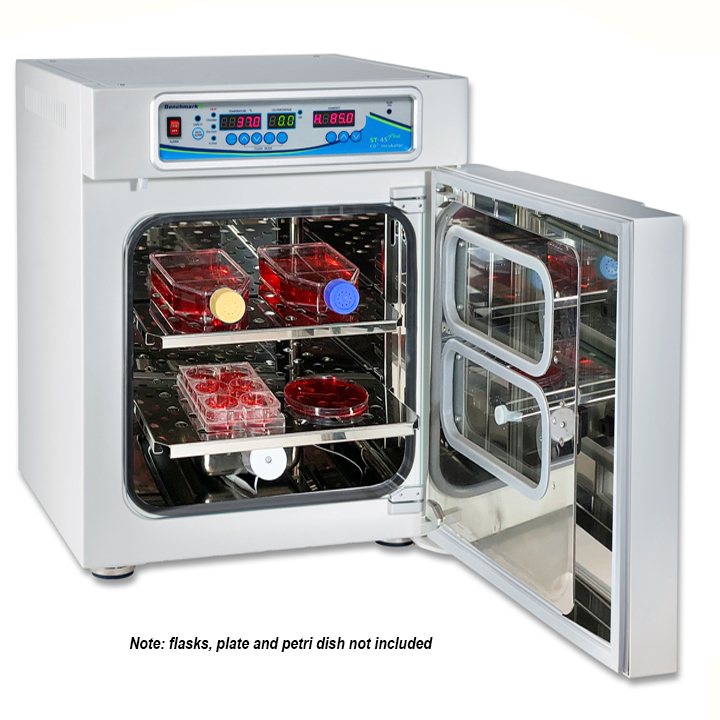
A laboratory incubator is a temperature-controlled, insulated chamber designed to facilitate the growth and maintenance of microbiological or cell cultures. It provides a contaminant-free environment with regulated conditions, such as temperature, humidity, and CO2, allowing for secure and dependable work with cell and tissue cultures. Low temperature incubators, in particular, are invaluable for insect or plant studies.
The various types of laboratory incubators can cater to different scientific needs, from cooled/refrigerated incubators for insect or plant studies to humidity and CO2 incubators for cell and tissue cultures. With the ability to maintain temperatures up to 60°C to 65°C (140°F to 149°F) and beyond, lab incubators ensure optimal conditions for a wide range of scientific applications.
The Role of Laboratory Incubators in Science
Laboratory incubators play a pivotal role in cultivating microorganisms under controlled conditions. Their design allows them to maintain optimal temperature, humidity, and gaseous content, which is vital for various scientific applications like cell and tissue culture, microbiology, and biochemical studies. It’s necessary for the heat to be distributed evenly to maintain optimal conditions for these applications.
Various types of lab incubators cater to different needs, such as cooled/refrigerated incubators for insect or plant studies and shaking and benchtop incubators for sample homogenization and microbiological incubators for general laboratory use. Providing an ideal environment for numerous studies, lab incubators aid in groundbreaking research across a range of scientific fields.
Key Features of Laboratory Incubators
Laboratory incubators typically feature the following:
-
Temperature control
-
Humidity control
-
Programmable timer
-
Built-in alarms
-
Adjustable door heaters
-
Stackability
-
Interior lighting
-
Controlled atmosphere
These features ensure that the incubator can maintain the necessary conditions for the growth and development of various biological samples.
Temperature control is the capacity to sustain a particular temperature inside a laboratory incubator. Meanwhile, humidity control is the capability to sustain a predetermined humidity level within the incubator. These features, coupled with other key components, render lab incubators as indispensable tools in scientific research. They provide an ideal environment for cultivating microorganisms and conducting a variety of experiments.
Components of a Laboratory Incubator
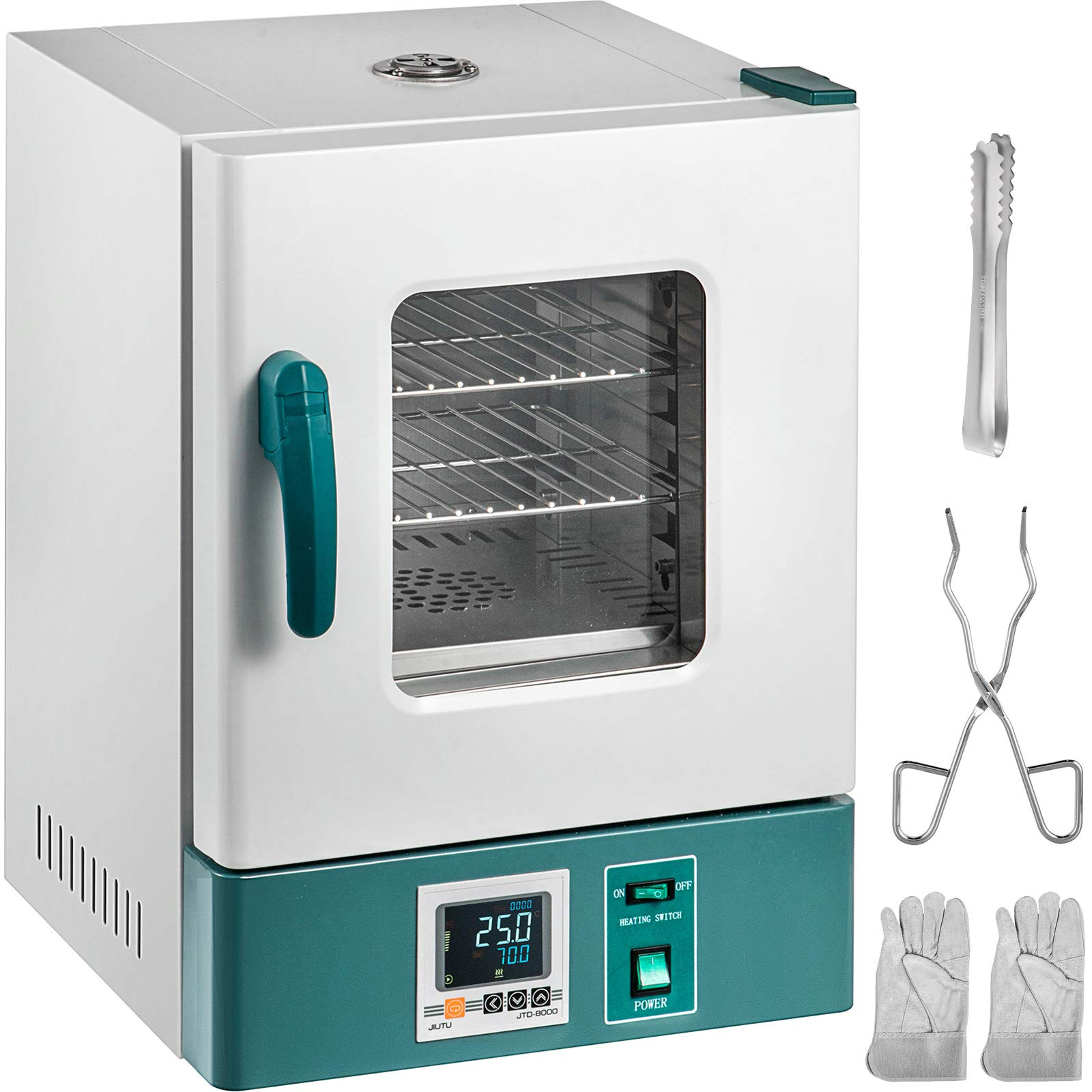
A laboratory incubator is made up of several components, each playing a critical role in maintaining the ideal environment for the growth and maintenance of microorganisms. These components include the outer shell and insulation, temperature control system, and shelves and air circulation system. Understanding each of these components is crucial for ensuring the proper functioning of the incubator and the success of your experiments.
Dissecting the components of a laboratory incubator helps in understanding how these devices create ideal conditions for cultivating various biological samples. In the following sections, we will delve into the details of each component, providing insights into their functions and importance in the overall operation of the incubator.
Outer Shell and Insulation
The interior of the laboratory incubator cabinet is composed of aluminum, while the outer wall of the exterior is constructed of stainless steel. This robust construction not only ensures durability but also facilitates easy cleaning and maintenance.
Door gaskets and insulation materials like glass wool play a vital role in maintaining the optimal temperature inside the incubator. The gaskets prevent the escape of hot air outside the cabinet and the entrance of non-sterile air into the cabinet, while the glass wool insulates direct heat through the gap between the double-wall, thus preventing heat loss.
This combination of materials and design ensures that the incubator can maintain a stable and controlled environment for your samples.
Temperature Control System
The temperature control system in a lab incubator ensures a consistent and controlled temperature environment for applications such as cell culture, research experiments, and sample incubation. This system includes a thermostat, thermometer, and control panel, which work together to regulate the temperature within the incubator.
The control panel, located externally to the shaking incubator cabinet, contains a variety of switches to regulate the incubator’s various parameters, as well as the thermostat. The thermometer is utilized to measure the temperature within the incubator, ensuring that the desired temperature is maintained consistently throughout the incubation process.
Shelves and Air Circulation
Shelves within the incubator play a crucial role in organizing samples and facilitating proper air circulation. Perforations on the shelves allow hot air to circulate throughout the incubator, ensuring even heat distribution.
Proper air circulation is vital for maintaining optimal conditions for the growth and development of biological samples. Some features that enhance the capabilities of incubators and provide a more controlled environment for various applications include:
-
HEPA filters
-
Humidity control
-
CO2 control
-
Removable shelves for easy cleaning and maintenance.
Different Types of Laboratory Incubators
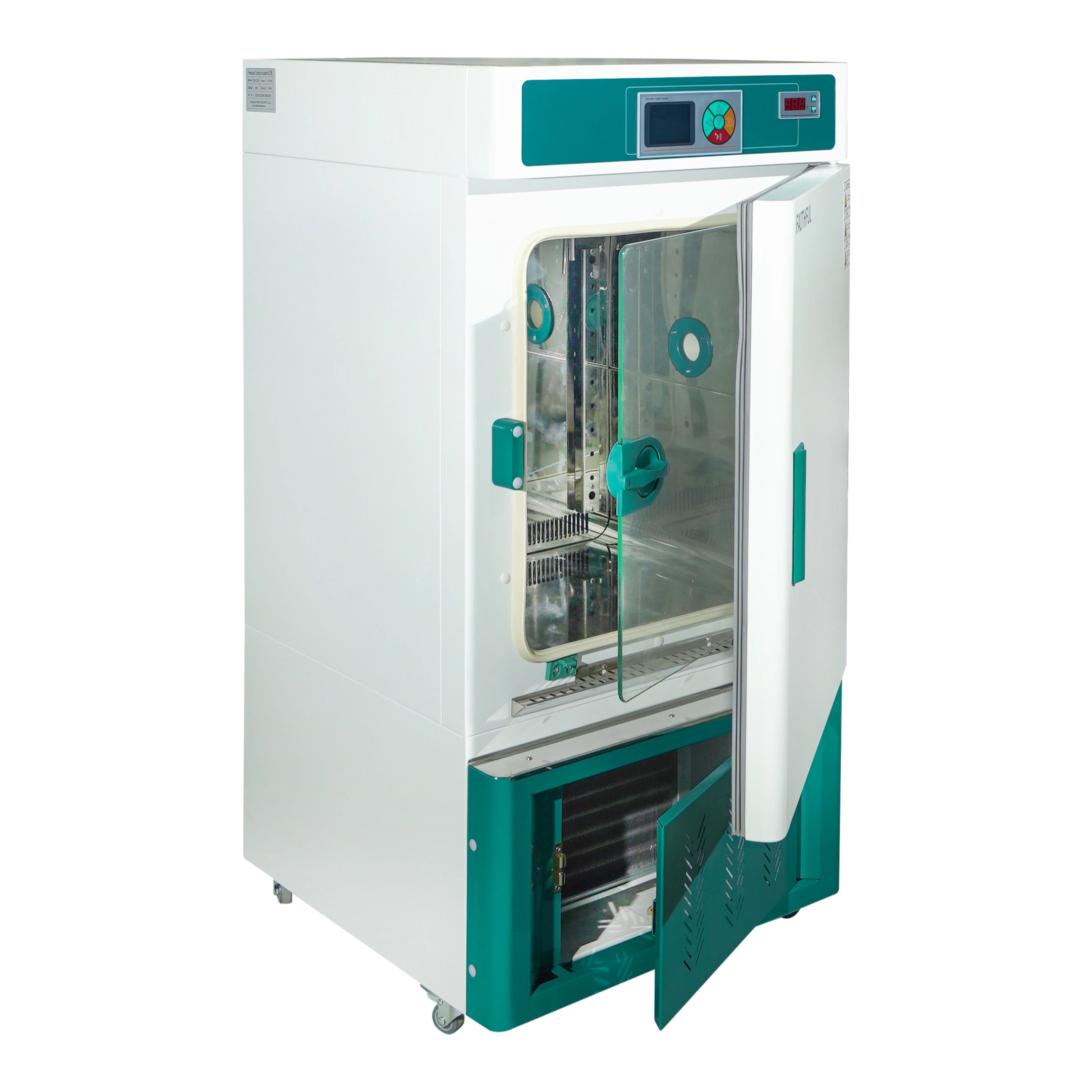
Laboratory incubators come in various types, each designed to cater to specific needs and applications. From dry bath incubators with single or dual blocks to BOD units and shaking incubators, there is an incubator to suit every scientific requirement.
Understanding the differences between these types enables you to select the most suitable incubator for your specific research needs.
We will now delve into some of the most common lab incubators, highlighting their unique features and applications. This classification will provide you with a better understanding of the versatility of lab incubators and their importance in numerous scientific fields.
Cooled/Refrigerated Incubators
A refrigerated incubator is equipped with a refrigeration system, allowing it to maintain temperatures below ambient temperature. These incubators are particularly useful for applications that require lower temperatures, such as insect or plant studies.
With their ability to maintain a wide temperature range, cooled/refrigerated incubators are highly versatile and can be utilized in various laboratory settings, including biology and microbiology labs. Their temperature control capabilities make them indispensable tools for researchers working in these fields.
Humidity and CO2 Incubators
Humidity and CO2 incubators are designed to control not only temperature but also humidity and CO2 levels within the incubation chamber. These incubators are particularly useful for cell and tissue culture applications, where maintaining specific humidity levels and CO2 concentrations is crucial for successful growth and development.
Indirect heating helps sustain the specific atmosphere within the cabinet, ensuring optimal conditions for cell and tissue culture growth. The water tray in a CO2 incubator serves to sustain humidity levels, while CO2 level maintenance is achieved through the use of infrared or thermal conductivity sensors. These features make humidity and CO2 incubators valuable tools in cell and tissue culture research.
Shaking and Benchtop Incubators
Shaking incubators combine a motor/shaker and an incubator to provide a controlled environment with adjustable temperature, humidity, oxygen level, and constant shaking for a homogenous mixture of samples. These incubators are particularly useful for applications that require sample agitation, such as microbial cultures or enzyme reactions.
Benchtop incubators, on the other hand, are designed for general laboratory use and are often utilized for cultivating yeast and mold at a temperature range of 20-25 C. Their compact size and versatility make them a popular choice for a wide range of research applications, from cell culture to microbial studies.
Applications of Laboratory Incubators

Laboratory incubators find use in various scientific applications, playing a crucial role in:
-
Cell culture
-
Pharmaceutical studies
-
Microbiology research
-
Sustaining microbiological or cell cultures
Laboratory incubators, also known as laboratory test chambers, provide optimal temperature, humidity, and other conditions, empowering researchers to cultivate microorganisms and carry out experiments with utmost precision and accuracy.
Next, we will delve into the myriad applications of lab incubators, underlining their significance in cell and whole culture media tissue cultures, microbiological studies, and biochemical and hematological studies. This will provide a deeper understanding of how lab incubators contribute to scientific breakthroughs in numerous fields.
Cell and Tissue Cultures
Laboratory incubators play a significant role in cell and tissue culture growth by creating a suitable environment characterized by optimal temperature, humidity, and other conditions. Ideal conditions for cell and tissue culture growth involve a temperature range of 25-37°C, a relative humidity of 40-80%, and a CO2 concentration of 5-10%.
Maintaining these optimal conditions is crucial for the success of various research applications, such as drug testing and the study of cellular responses to various environmental factors regulating conditions. By ensuring a controlled environment, lab incubators enable scientists to conduct accurate and reliable experiments in cell and tissue culture research.
Microbiological Studies
Laboratory incubators, including low temperature incubator models, are invaluable tools in microbiology research, as they enable the cultivation and preservation of bacterial cultures. They are particularly useful for applications that require a constant temperature of 35–37°C for bacteria.
By providing a controlled environment, lab incubators are used to facilitate microbiological studies that analyze the proliferation of microorganisms, evaluate the effects of varying environmental conditions on the growth of microorganisms, and assess the effects of distinct drugs on microorganisms. Microbiological cultures are a key application of lab incubators in this field.
Biochemical and Hematological Studies
Lab incubators are indispensable for biochemical and hematological studies, as they provide a regulated environment for the growth and development of cells and other biological molecules. Moreover, they enable accurate control of temperature, humidity, and other environmental factors, which are indispensable for successful biochemical and hematological studies, including those involving both biochemical oxygen demand and biological oxygen demand.
Applications of lab incubators for biochemical and hematological studies include:
-
Cell culture
-
Enzyme reactions
-
Protein expression and purification
-
Hematology studies
-
DNA amplification
-
Microbial studies
By offering a controlled environment, lab incubators facilitate accurate and reliable experiments in these fields, contributing to advancements in diagnostics, therapeutics, and our understanding of biological processes.
Operating Precautions and Maintenance
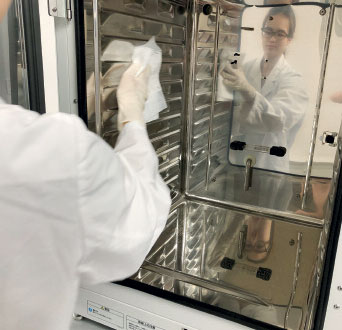
To guarantee the stability of lab incubators and success of your experiments, certain operational precautions and maintenance guidelines should be adhered to. These include avoiding temperature fluctuations, overloading, and adhering to temperature and humidity guidelines. Properly maintaining and operating your lab incubator will ensure its optimal functioning and prevent any potential contamination of your samples.
We will now present detailed guidelines for the safe operation and maintenance of a lab incubator. By understanding and implementing these precautions, you can ensure the longevity of your incubator and the success of your scientific endeavors.
Safety Measures
Using a lab incubator necessitates:
-
Wearing protective clothing like gloves and safety glasses
-
Adherence to all safety protocols
-
Ensuring that the incubator is adequately ventilated
-
Setting the temperature and humidity accurately
Lab incubators typically feature over-temperature protection, over-humidity protection, and automatic shut-off for safety. By following these safety measures, you can guarantee the safe operation of your lab incubator and prevent any potential accidents or damage to the equipment.
Cleaning and Maintenance
Maintaining cleanliness and regular upkeep of your lab incubator is vital to ensure its peak performance and avoid potential contamination of your samples. The cleaning procedure for a lab incubator involves gently wiping down the interior and exterior surfaces with a mild detergent and warm water, avoiding the use of abrasive cleaners or harsh chemicals.
Regular maintenance is equally important and requires the following routine tasks:
-
Monitoring temperature and humidity levels
-
Checking the air circulation system
-
Inspecting for signs of wear and tear
-
Replacing any worn components
By following these cleaning and maintenance guidelines, you can ensure the longevity and optimal performance of your lab incubator.
Summary
Lab incubators are indispensable tools in various scientific fields, enabling researchers to cultivate microorganisms and conduct experiments with high precision and accuracy. By understanding their components, types, applications, and safety precautions, you can make informed decisions when selecting and using a lab incubator for your specific research needs.
As we have seen throughout this blog post, lab incubators play a vital role in fostering scientific breakthroughs in numerous fields, from cell and tissue cultures to microbiological studies and biochemical and hematological research. By properly maintaining and operating these essential devices, you can ensure the success of your experiments and contribute to the advancement of scientific knowledge.
Certified MTP has the largest selection of lab ovens and lab incubators in their wide selection from manufacturers such as Quincy Lab Ovens, Despatch Ovens, Lab Companion Ovens and Grieve Ovens.
Frequently Asked Questions
What is the difference between a lab oven and a lab incubator?
Lab ovens typically run hotter than lab incubators, with temperatures ranging between 70°C and 250°C or more, making them useful for applications like drying, sterilization and material testing. Incubators, on the other hand, provide a temperature-controlled environment to support the growth of microbiological cultures, with temperatures usually falling in the range of 30°C to 60°C.
What is the incubator for bacteria culture?
A microbiological incubator provides the necessary environmental conditions for growing and storing bacterial cultures, allowing researchers to conduct a variety of experiments.
What is an incubator in the laboratory?
A laboratory incubator is an insulated box used to create optimal conditions for growing and maintaining microbiological or cell cultures. It maintains temperature, humidity and gaseous content of the atmosphere inside.
What is the purpose of the incubator?
An incubator is an insulated enclosure used to maintain optimal temperatures, humidity, oxygen, and light levels for hatching or growing, such as cell cultures, germ colonies, microorganisms, poultry, or premature infants.
What are the key features of lab incubators?
Lab incubators offer temperature and humidity control, a programmable timer, an adjustable heater, door heaters, stackability, interior lighting, and a controlled atmosphere for optimal results.
Related Blogs to Lab Incubator:
Replacing a Sheldon Lab Oven Door Gasket
A Guide to Grieve Ovens and Industrial Oven Manufacturing
An Overview Despatch Oven: The Leader in Industrial Ovens
The Ultimate Guide to Industrial Oven Manufacturers
Find the Perfect Heat Treat Oven for Your Needs
Quincy Lab Ovens: Discover the Benefits
Vacuum Oven: Unlocking the Benefits
The Benefits of a Drying Oven for Industrial Applications
The Benefits of Lab Oven for Heating and Drying
What is Pyrolytic Oven Cleaning and Is It Worth it?
Get the Best Lab Oven for Your Research
Field Oven vs Laboratory Oven: Which is More Accurate?
Industrial Oven: Key Considerations
Top Oven for Laboratory: Your Guide to Precise Heating
Comprehensive List of Biology Laboratory Equipment in 2023
Despatch Oven: The Power of Industrial Ovens and Furnaces
Understanding Rolling Thin Film Oven Testing Equipment
Ignition Oven: A Guide to NCAT Asphalt Content Furnace Tech
Key Considerations for Choosing Your Industrial Oven or Furnace
The Benefits of a Lab Convection Oven
Gravity Convection Oven: Unlock the Benefits
Muffle Furnace: Unlocking the Benefits
Benchtop Muffle Furnaces for Laboratories
